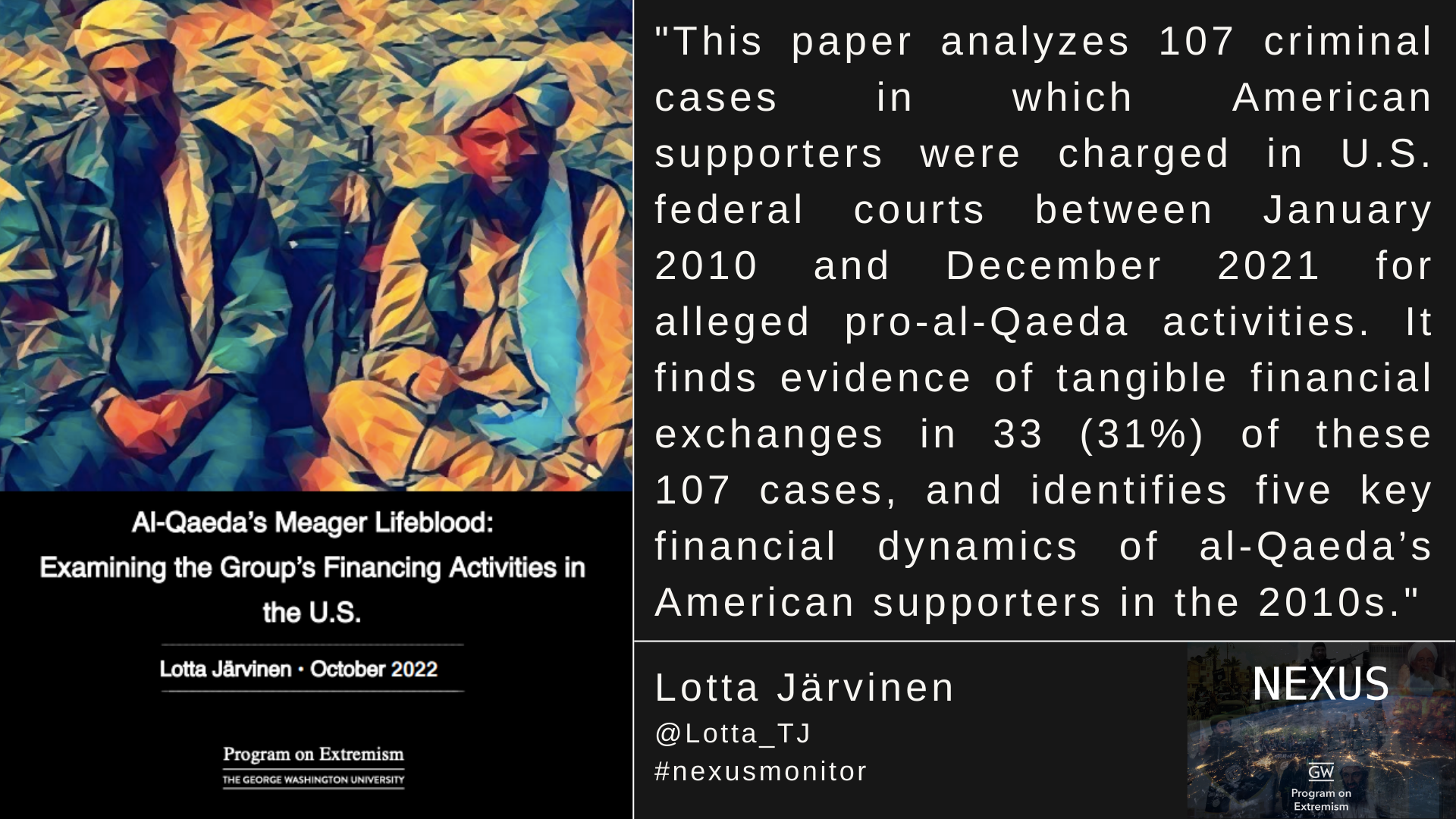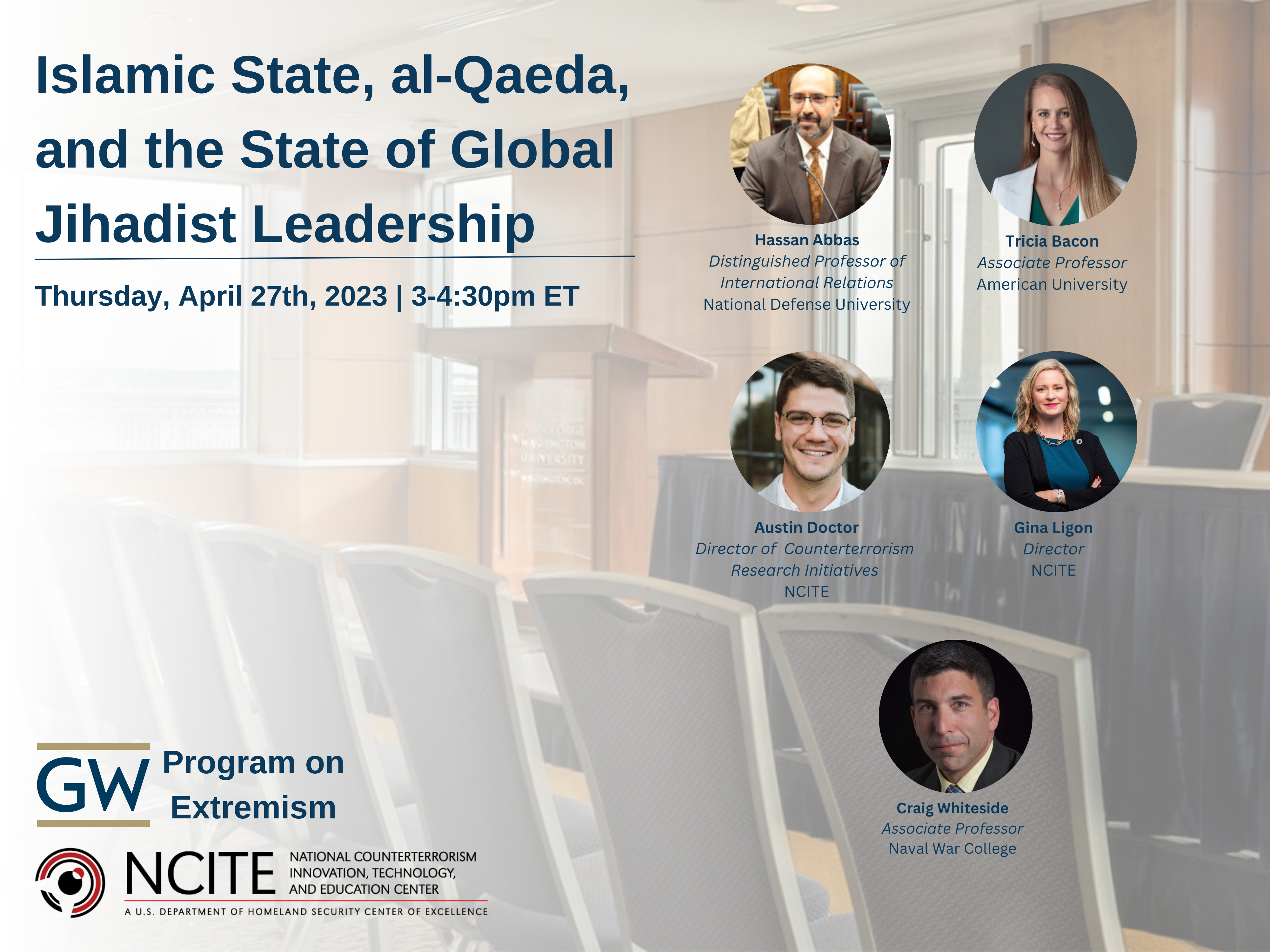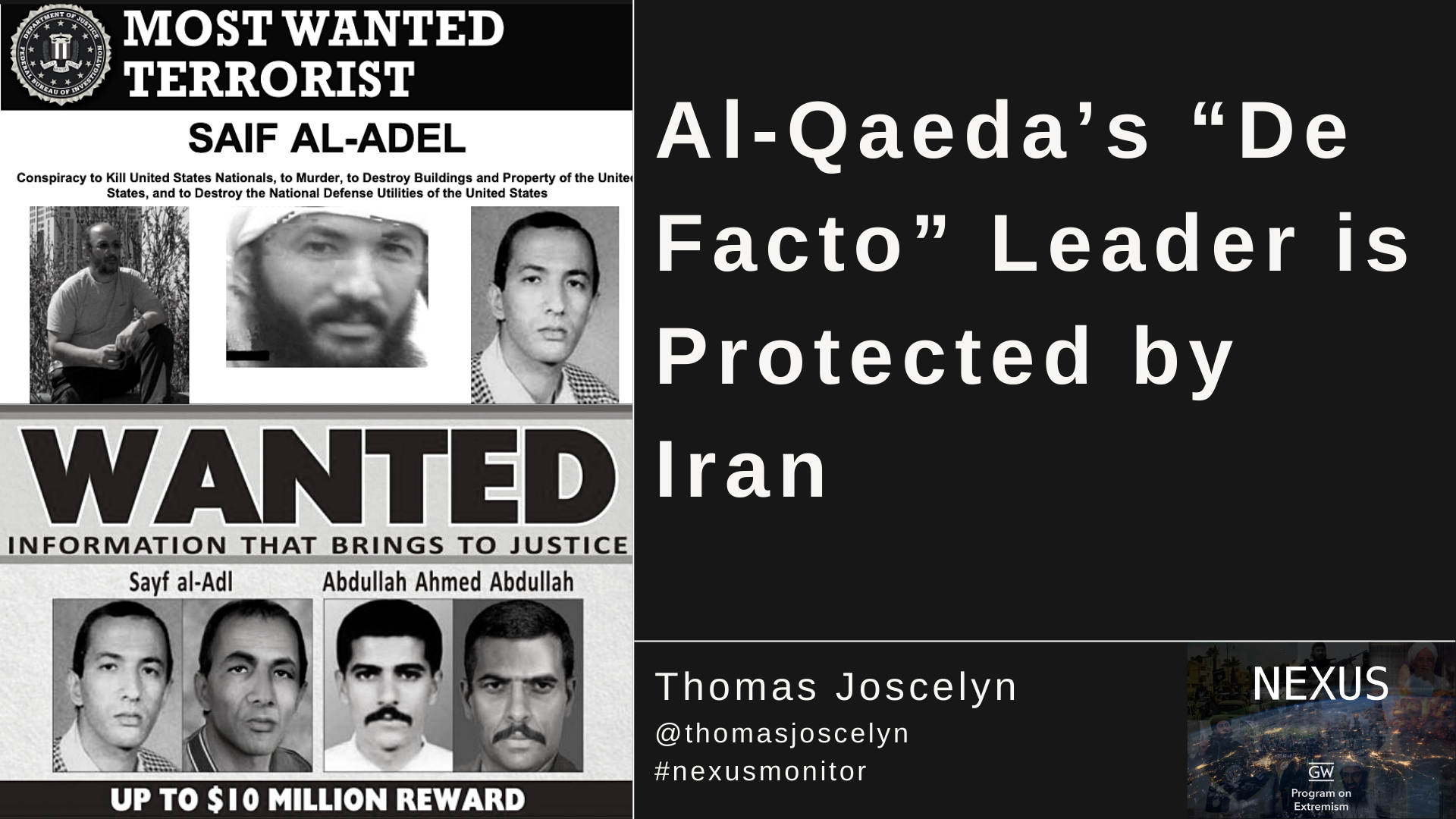Summary
In the wake of the September 11, 2001 terrorist attacks, one of the cornerstones of the U.S. government’s response was to detect, disrupt, and deter the financing of terrorist activities. New legislation, policies, cooperation among authorities, and international efforts to curb financial support for organizations like al-Qaeda and their illicit operations led to a number of positive developments in thwarting terrorists’ abilities to raise, move, and store assets. Indeed, the post-9/11 weakening of al-Qaeda’s international financial efforts is widely acknowledged. Less studied, however, is how the group’s financing methods have adapted in the wake of the post-9/11 counter-terrorism financing regime, and particularly the financial dynamics surrounding al-Qaeda’s American supporters during the 2010s. To that end, this paper analyzes 107 criminal cases in which American supporters were charged in U.S. federal courts between January 2010 and December 2021 for alleged pro-al-Qaeda activities. It finds evidence of tangible financial exchanges in 33 (31%) of these 107 cases, and identifies five key financial dynamics of al-Qaeda’s American supporters in the 2010s.
First, the quantity of al-Qaeda-related financing schemes in the U.S. during the 2010s was relatively low. Of the 107 related criminal cases examined in this paper, only 33 (31%) involved evidence of tangible financial exchanges beyond self-funding for attack planning or personal travel to join al-Qaeda affiliates overseas. This includes supporters who raised funds, transferred funds to other alQaeda supporters, or purchased equipment either for themselves to utilize in al-Qaeda-related jihadist activities or for others, mainly foreign fighters or future foreign fighters.
Second, these schemes involved relatively low dollar amounts and levels of sophistication. Usually, the total amount per case did not exceed a few thousand U.S. dollars, and was commonly carried out by al-Qaeda-inspired individuals or small cells. Additionally, the methods supporters used to move funds tended to be rather unsophisticated. Withstanding a few exceptions introduced later in this paper, the majority of the cases consisted of simple modes of asset movement such as cash transfers, bank transfers, or the use of other money or value transfer services (MVTS’s).
Third, the vast majority of cases revolved around outward flow of financial support. Usually, assets were transferred to foreign terrorist fighters (FTFs) or other affiliated actors in conflict zones. The flow of funds was unidirectional; no publicly-known cases exist in which funds entered the U.S. to be used for terrorist operations against the homeland. However, there were a few instances in which individuals traveled abroad and returned with plans or directions to execute attacks on U.S. soil. In these instances, the total value of assets involved was marginal.
Fourth, more than half of the examined cases involved individuals who offered financial support to al-Shabaab, an al-Qaeda-affiliated group operating out of Somalia. These cases were often connected to young men who had travelled or attempted to travel to fight in the group’s ranks overseas.
Fifth, there was rarely any financial involvement from core members of al-Qaeda, for example in the form of directions or assistance. In the majority of cases, individual persons or small groups with discernible levels of financial activity were self-directed. Those that received directions usually did so from affiliated friends or relatives, not from core al-Qaeda members. One notable exception is Anwar al-Awlaki, the deceased English-speaking propagandist of al-Qaeda whose charismatic leadership and mobilization of Western recruits is well-established. In addition to his influence on social media, as well as through Inspire magazine (the English-language magazine of al-Qaeda), al-Awlaki also appears to have had personal contact via e-mail with many of the group’s supporters residing in the U.S. during the early 2010s.
Furthermore, this paper analyzes how these identified financial dynamics from the 2010s compare to the financing modus operandi of al-Qaeda-related actors during the 2000s, and American Islamic State supporters during the 2010s. Al-Qaeda’s organizational fundraising activities from the 2000s through channels like charitable entities appear to have been non-existent during the 2010s. This is likely due to the aforementioned anti-money laundering and countering the financing of terrorism efforts (AML/CFT) that developed after the 9/11 attacks. It may also be the result of a general shift by jihadist organizations towards more localized financing operations, especially in under-governed territories that allowed jihadist groups to exploit local resources and economies.
When broadening the temporal comparison of al-Qaeda’s financing operations in the U.S. to compare and contrast supporters of different terrorist groups, it is worthwhile to note that there appear to be more similarities than differences. When examining post-2010 al-Qaeda and Islamic State supporters in the U.S., both seem to have lacked scale and sophistication. Additionally, there seems to have been little financial involvement from the core members of both organizations. However, the al-Qaeda-related cases on average involved slightly more participation as well as larger asset quantities than the Islamic State cases, which largely consisted of single individuals and smaller quantities of assets by comparison. While the total number of Islamic State-related cases with tangible financing efforts outnumbered al-Qaeda cases over the last decade, this phenomenon is likely due to the unprecedented U.S.-based pro-Islamic State mobilization after the declaration of the so-called caliphate in 2014.




